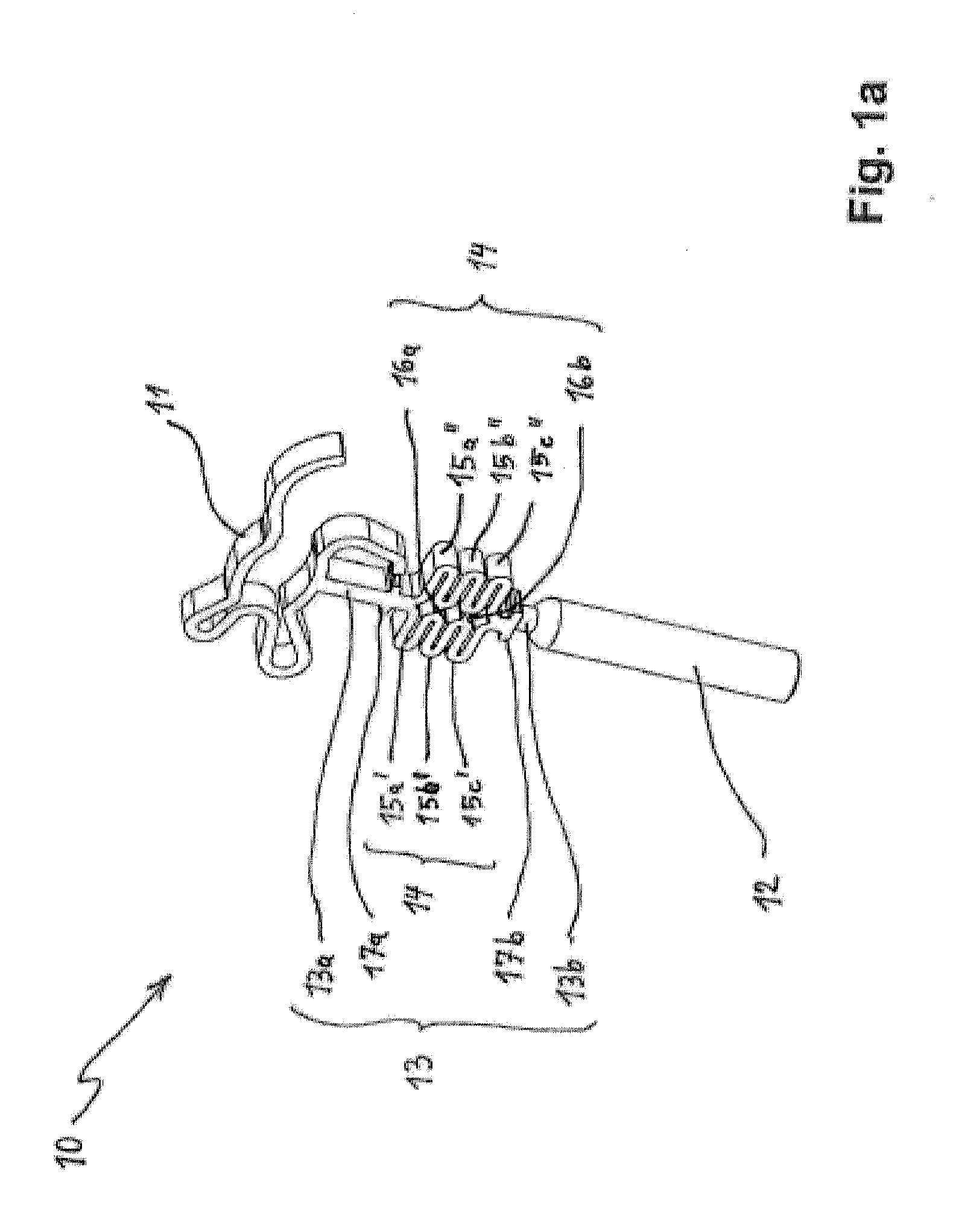Variable-length ossicular prosthesis
a technology of ossicular prosthesis and variable length, which is applied in the field of ossicular prosthesis, can solve the problems of limited sound conduction or signal transmission between the tympanic membrane and the inner ear, inability to achieve a fixed, reproducibly exact length of the prosthesis, and high cost of manufacture, and achieves the effect of increasing technical complexity and hearing damag
- Summary
- Abstract
- Description
- Claims
- Application Information
AI Technical Summary
Benefits of technology
Problems solved by technology
Method used
Image
Examples
Embodiment Construction
[0056]The five embodiments of ossicular prosthesis 10; 20; 30; 40; 50 according to the present invention, which are depicted schematically and using different detail in the figures, each includes, at one end, a first fastening element 11; 21 which is used to mechanically connect the prosthesis to the tympanic membrane or a component of the ossicular chain. Attached to the other end of ossicular prosthesis 10; 20; 30; 40; 50 is a second fastening element 12; 22; 32 for mechanically connecting the prosthesis to a further component or parts of a component of the ossicular chain, or for insertion directly into the inner ear. Located between the two is an elongated connecting element 13; 23; 33; 43; 53 that connects fastening elements 11; 21 and 12; 22; 32 in a sound-conducting manner.
[0057]Each connecting element 13; 23; 33; 43; 53 includes one adjusting device 14; 24; 34; 44; 54 for adjusting the axial length of an individual ossicular prosthesis 10; 20; 30; 40; 50 in the axial directi...
PUM
 Login to View More
Login to View More Abstract
Description
Claims
Application Information
 Login to View More
Login to View More - R&D
- Intellectual Property
- Life Sciences
- Materials
- Tech Scout
- Unparalleled Data Quality
- Higher Quality Content
- 60% Fewer Hallucinations
Browse by: Latest US Patents, China's latest patents, Technical Efficacy Thesaurus, Application Domain, Technology Topic, Popular Technical Reports.
© 2025 PatSnap. All rights reserved.Legal|Privacy policy|Modern Slavery Act Transparency Statement|Sitemap|About US| Contact US: help@patsnap.com



